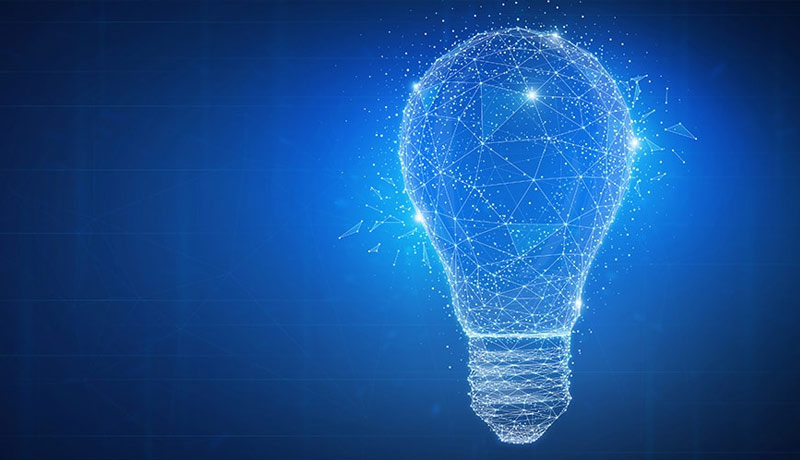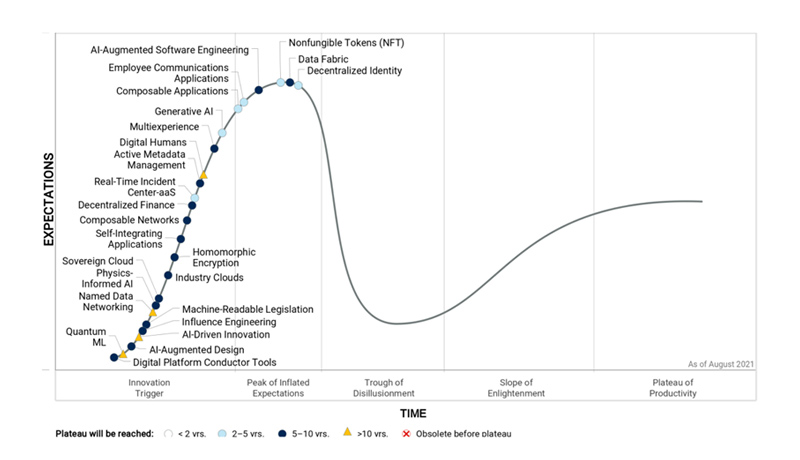
On the Gartner, Inc. Hype Cycle for Emerging Technologies, 2021, the three overarching trends that will drive organisations to explore emerging technologies such as nonfungible tokens (NFT), sovereign cloud, data fabric, generative AI, and composable networks to help secure competitive advantage are engineering trust, accelerating growth, and sculpting change.
“Technology innovation is a key enabler of competitive differentiation and is the catalyst for transforming many industries. Breakthrough technologies are continually appearing, challenging even the most innovative organisations to keep up,” said Brian Burke, research vice president at Gartner. “Leading organisations will lean on the emerging technologies in this year’s Hype Cycle to build trust and new growth opportunities against a background of continued strategic change and economic uncertainty.”
The Hype Cycle for Emerging Technologies is different from other Gartner Hype Cycles. It distils information from over 1,500 technologies into a concise list of “must know” emerging technologies and trends that have the potential to deliver a significant competitive advantage over the next five to ten years.
Figure 1. Hype Cycle for Emerging Technologies, 2021

Source: Gartner (August 2021)
“As organisations continue their focus on digital business transformation, they must accelerate change and cut through the hype surrounding emerging technologies,” said Melissa Davis, research vice president at Gartner.

“This Hype Cycle provides a high-level view of important emerging trends that organisations must track, as well as the specific technologies that must be monitored through the themes of Trust, Growth and Change,” said Philip Dawson, research vice president at Gartner.
Engineering Trust: Trust necessitates security and dependability. It may, however, also refer to the development of innovations as a robust core and foundation for IT to provide business value. Engineered, repeatable, trustworthy, proven, and scalable working processes and innovations must form the foundation.
For example, US and Asian vendors now dominate the market for digital and cloud technologies and services. As a result, many European firms store their data in these locations, causing political unrest as well as worries about data security and compliance with local laws. Countries can use a sovereign cloud to gain digital and data sovereignty, resulting in legislative requirements for data protection rules, residency requirements, protectionism, and intelligence collection.
Sovereign cloud, NFT, machine-readable legislation, decentralised identity, decentralised finance, homomorphic encryption, active metadata management, data fabric, real-time incident centre, and employee communications applications are some of the technologies to keep an eye on in order to engineer trust.
Accelerating Growth: Recovery and expansion are possible if a reliable core business has been created. To guarantee that near-term goals are met, organisations should balance technological risk with their appetite for business risk. Accelerated growth expands delivery and value after the innovation-led core has scaled.
For example, generative AI is a new technology being used by the pharmaceutical sector to assist cut drug discovery costs and time. According to Gartner, more than 30% of novel medicines and materials will be found systematically utilising generative AI approaches by 2025. Generative AI has the potential to not just improve and accelerate design in a variety of disciplines, but also to “invent” innovative concepts that people may otherwise overlook.
The following technologies should be considered to help speed growth: multiexperience, industrial cloud, AI-driven innovation, quantum machine learning (ML), generative AI, and digital humans.
Sculpting Change: Organizations may use innovations to sculpt change and bring order to disorder. Change is historically disruptive and frequently associated with turmoil, but organisations can utilise innovations to sculpt change and bring order to chaos. Anticipating and auto-tuning to the requirements of change is the art.
Composable business apps, for example, provide for a better fit of app experiences to a dynamic, operational business environment. Composable business, which is based on composable application technology and built with composable thinking, enables businesses to recognise and capitalise on business opportunities, respond to unexpected disruptions, and meet changing customer demands at their own pace while maintaining customer loyalty.
Composable applications, composable networks, AI-augmented design, AI-augmented software engineering, physics-informed AI, influence engineering, digital platform conductor tools, named data networking, and self-integrating applications should all be considered by organisations looking to sculpt change.
The 2021 Hype Cycle for Emerging Technology is one of over 90 Gartner Hype Cycles that cover a wide range of innovations, technologies, business trends, and major vertical sectors. A free Gartner webinar titled “The Gartner Hype Cycle for Emerging Technologies, 2021” provides further details.
Gartner IT Symposium/Xpo 2021 will provide more analyses on upcoming technology trends.